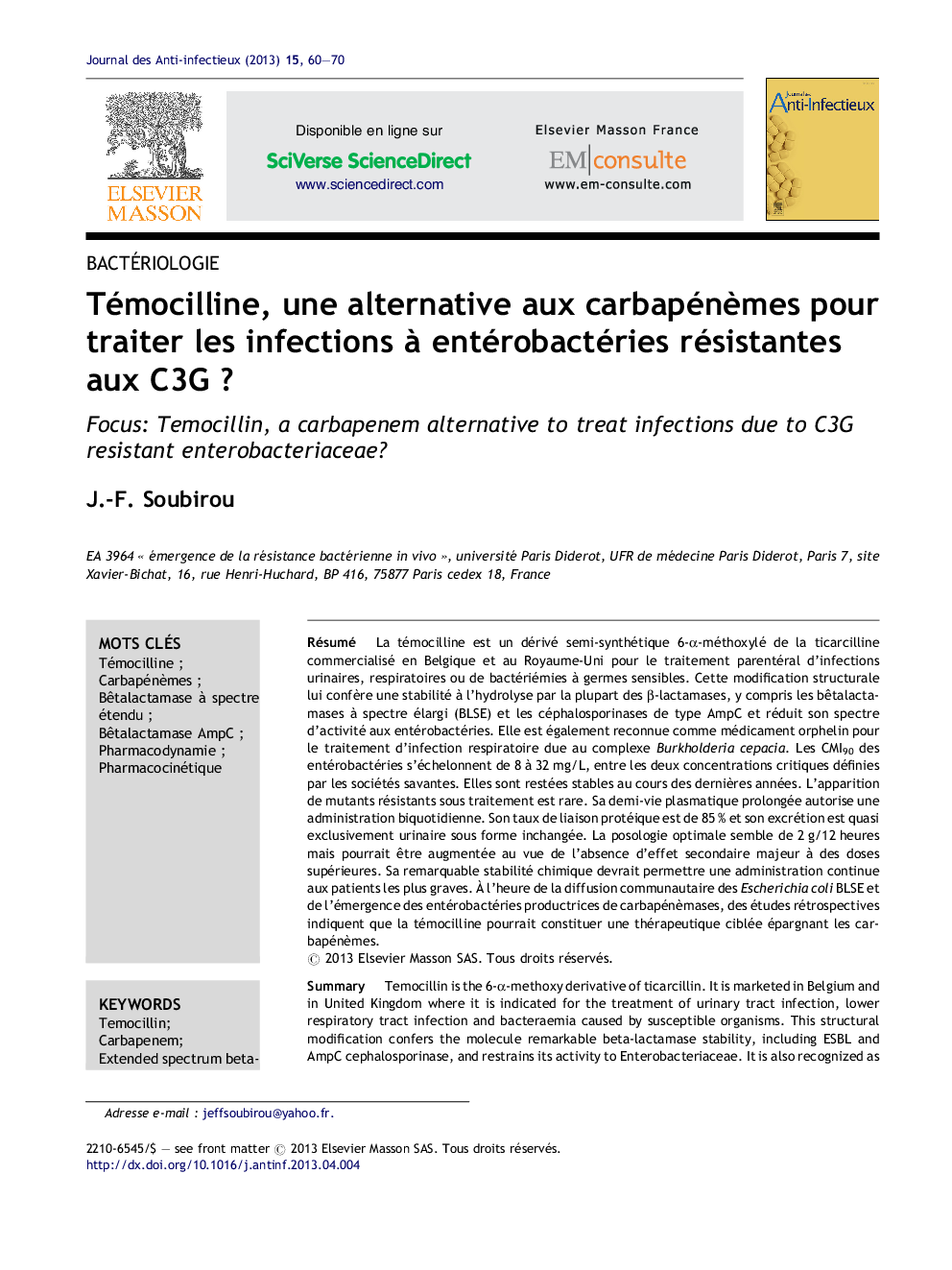| Article ID | Journal | Published Year | Pages | File Type |
|---|---|---|---|---|
| 3405346 | Journal des Anti-infectieux | 2013 | 11 Pages |
Abstract
Temocillin is the 6-α-methoxy derivative of ticarcillin. It is marketed in Belgium and in United Kingdom where it is indicated for the treatment of urinary tract infection, lower respiratory tract infection and bacteraemia caused by susceptible organisms. This structural modification confers the molecule remarkable beta-lactamase stability, including ESBL and AmpC cephalosporinase, and restrains its activity to Enterobacteriaceae. It is also recognized as orphan drug for the treatment of Burkholderia cepacia complex respiratory infection. The MICs90 for Enterobacteriaceae are between 8 to 32 mg/L, which corresponds to the clinical breakpoints defined by the national societies of microbiology. They have remained stable over the last few years. Selection of bacterial variants under treatment is rare. Its prolonged serum half-life allows a twice daily administration. Temocillin is 85 % protein bound and is mainly excreted unchanged in urine. The optimal dosage seems to be 2 g/12 hours but it may be increased regarding the lack of major adverse effect when higher doses are used. Its remarkable chemical stability should allow continuous administration to critically ill patients. By the time of the community diffusion of ESBL-producing Escherichia coli and of the emergence of carbapenemase-producing Enterobacteriaceae, retrospective studies indicate that temocilline could constitute a carbapenem-sparing agent.
Keywords
Related Topics
Health Sciences
Medicine and Dentistry
Infectious Diseases
Authors
J.-F. Soubirou,
